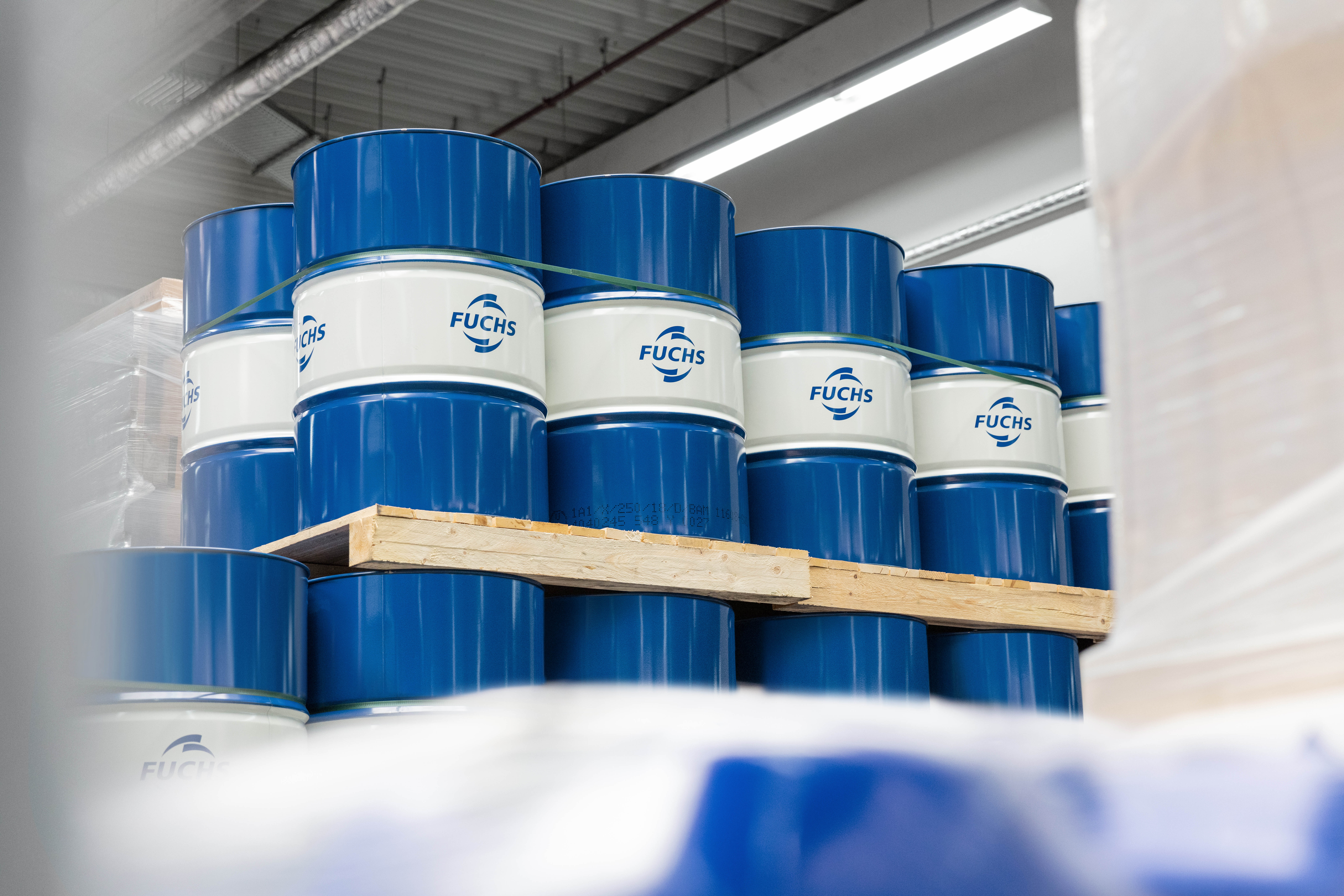10 tips to take care of your lubricants
By: FUCHS Group
Good organization, greater safety, a better overview of what’s happening, and why it’s happening. There are many benefits to be had by getting your lubricant management in good order. In simple terms it’s all about achieving one thing: making sure the right lubricant is used in the right place, in the right way. And when your lubrication is optimal, it helps to hone your business’s performance and productivity.
THE RIGHT STORAGE
- Store drums and other packs under a roof – this will keep the drums dry and prevent water from collecting on the top. If water gets into the drum, it will contaminate the lubricant. Cutting fluids should be stored not just under a roof, but indoors. They are emulsificable and will be ruined if they freeze.
- Drums stored outdoors should be kept on pallets – the ground is wet and dirty. So, keep drums on pallets and store them lying down to prevent water collecting on top. Place the drum openings at ‘a quarter past nine’. This makes sure they are covered by oil, which will provide a seal during storage. If drums are stored standing, use a wedge to make sure that water can run off the top and not collect.
- Make sure open packs are resealed – dust and dirt can get into poorly sealed packs and contaminate the lubricant. As always, abrasive particles like dust and dirt can reduce the life of the oil and machine components, and lead to operational disruptions. It might be possible to filter contaminated oil, but a dirty lubricating grease cannot be cleaned.
METICULOUS CLEANING
- Clean the pack before opening – a pack can be soiled during transport and storage. Therefore, be sure to clean around the pack’s seals before opening. Again, the aim here is to keep abrasive particles out of the lubricant and the machines.
- Clean the filling points before adding new lubricant – dirty filling lids and grease nipples can contaminate the lubricant. A nipple retains a thin layer of grease where dirt can collect and be ‘pushed into’ the system when new lubricant is added. This can be avoided by carefully cleaning all filling points. It’s also equally important to check that the system is sealed properly after refilling.
- Use a clean can when refilling – have one can for each oil type and make sure they are properly closed and sealed. One good tip when refilling oil is to use filters that remove particles. Avoid using funnels, which are a source of contaminants. A good modern can will render a funnel redundant. If you must use a funnel, store it in a plastic bag to prevent contamination.
REGULAR CHECKS
- Check the oil level regularly – an extremely important tip that should go without saying. It’s normal to fill oil to the maximum level, but in some cases, this should only be done when the system is at a complete standstill. Therefore, find out the recommendation for your particular system. Otherwise, you may risk overfilling, which can cause serious problems when the machine stops.
- Check and clean oil and air filters frequently – a simple job nowadays. Simple because the filters often have indicators which show you when it’s time to change the oil. A good rule of thumb is to fit a new filter whenever you change the oil. Air filters should be changed as necessary, but at least once a year.
- The right equipment – this is linked to a previous tip, but it bears repeating. Having a clean can for each type of oil should go without saying. As should properly closed/sealed refill containers and drum pumps for each type of oil. Also use grease guns with gauges which show how much grease is going into the system.
- Avoid spillages – they increase the risk of accidents and harm to people and the environment. Use gloves and other protective equipment to avoid the risk of skin problems. Also make sure there are trays or other spill protection wherever lubricants are stored. Always clean up any oil spillage promptly. This will help prevent the risk of slipping and harming the environment.
So, there you have our ten top tips. Apply them in your lubrication management and make it easier, safer, and smarter. They will make life easier for the person in charge of lubrication, reduce operational disruptions, and prolong the life of machines and other technical systems. A little extra effort that pays off big time!
